The Lover's Portrait
Zelda Richardson Mystery Series Book 1
by Jennifer S. Alderson
Genre: Mystery, Thriller, Suspense
A portrait holds the key to recovering a cache of looted artwork, secreted away during World War II, in this captivating historical art thriller set in the 1940s and present-day Amsterdam.
When a Dutch art dealer hides the stock from his gallery – rather than turn it over to his Nazi blackmailer – he pays with his life, leaving a treasure trove of modern masterpieces buried somewhere in Amsterdam, presumably lost forever. That is, until American art history student Zelda Richardson sticks her nose in.
After studying for a year in the Netherlands, Zelda scores an internship at the prestigious Amsterdam Museum, where she works on an exhibition of paintings and sculptures once stolen by the Nazis, lying unclaimed in Dutch museum depots almost seventy years later.
When two women claim the same portrait of a young girl entitled Irises, Zelda is tasked with investigating the painting’s history and soon finds evidence that one of the two women must be lying about her past. Before she can figure out which one and why, Zelda learns about the Dutch art dealer’s concealed collection. And that Irises is the key to finding it.
Her discoveries make her a target of someone willing to steal – and even kill – to find the missing paintings. As the list of suspects grows, Zelda realizes she has to track down the lost collection and unmask a killer if she wants to survive.
Awarded a B.R.A.G. Medallion by indieBRAG's readers in March 2019
Chosen as Chill with a Book’s January 2018 Book of the Month and winner of a Chill with a Book Readers’ Award
One of TripFiction's 10 Favorite Books set in Amsterdam
Silver Cup winner in Rosie's Book Review Team 2017 Awards, Mystery category
Readers’ Favorite 5 star medal
One of The Displaced Nation magazine’s Top 36 Expat Fiction Picks of 2016
One of Women Writers, Women’s Books magazine's Recommended Reads for April 2017.
Set in present day and wartime Amsterdam, this captivating thriller is not just about stolen paintings, but also the lives that were stolen. This art history mystery also describes the plight of homosexuals and Jewish artists in Europe during World War II, as well as the complexities inherent to the restitution of artwork stolen by the Nazis in the 1930s and 1940s.
The Lover's Portrait is Book One in the Zelda Richardson Mystery Series. The amateur sleuth mysteries in this series can be read in any order.
Book Trailer
Rituals of the Dead
Zelda Richardson Mystery Series Book 2
A museum researcher must solve a decades-old murder before she becomes the killer’s next victim in this riveting dual timeline thriller set in Papua and the Netherlands.
Agats, Dutch New Guinea (Papua), 1961: While collecting Asmat artifacts for a New York museum, American anthropologist Nick Mayfield stumbles upon a smuggling ring organized by high-ranking members of the Dutch colonial government and the Catholic Church. Before he can alert the authorities, he vanishes in a mangrove swamp, never to be seen again.
Amsterdam, the Netherlands, 2018: While preparing for an exhibition of Asmat artifacts in a Dutch ethnographic museum, researcher Zelda Richardson finds Nick Mayfield’s journal in a long-forgotten crate. Before Zelda can finish reading the journal, her housemate is brutally murdered and ‘Give back what is not yours’ is scrawled on their living room wall.
Someone wants ancient history to stay that way—and believes murder is the surest way to keep the past buried.
Can she solve a sixty-year-old mystery before decades of deceit, greed, and retribution cost Zelda her life?
Awarded a B.R.A.G. Medallion by indieBRAG's readers in December 2018
One of Amy's Bookshelf Reviews' Top 20 Books of 2018
Winner of a Chill with a Book Readers’ Award, June 2018
A Women Writers, Women’s Books magazine’s Recommended Reads for March 2018
New Apple’s 2018 Summer Book Awards, Official Selection Mystery/Thriller category
BookLife Prize for Fiction 2018, Mystery/Thriller category, rating 8.50
Art, religion and history collide in this edge-of-your-seat museum thriller, Book Two of the Zelda Richardson Mystery Series. The novels in this series can be read in any order.
Marked For Revenge
Zelda Richardson Mystery Series Book 3
An exhilarating adventure set in the Netherlands, Croatia, Italy, Luxembourg, and Turkey about stolen art, the mafia, and a father’s vengeance.
When researcher Zelda Richardson begins working at a local museum, she doesn’t expect to get entangled with an art theft, knocked unconscious by a forger, threatened by the mob, or stalked by drug dealers.
To make matters worse, a Croatian gangster is convinced Zelda knows where a cache of recently pilfered paintings is. She must track down an international gang of art thieves and recover the stolen artwork in order to save those she loves most.
The trouble is, Zelda doesn’t know where to look. Teaming up with art detective Vincent de Graaf may be her only hope at salvation.
The trail of clues leads Zelda and Vincent on a pulse-pounding race across Europe to a dramatic showdown in Turkey that may cost them their lives.
Awarded a Chill with a Book Readers' Award in June 2019
A Women Writers, Women's Books magazine Recommended Reads in June 2019
One of Amy's Bookshelf Reviews Top 20 Reads of 2019
Placed at #30 in ReadFreely's Top 50 Indie Reads of 2019
Chosen as Chill with a Book's June 2019 Cover of the Month
Marked for Revenge is the third book in the Zelda Richardson Mystery Series. The novels in this series can be read in any order.
The Vermeer Deception
Zelda Richardson Mystery Series Book 4
An art historian finds – then loses – a portrait by Johannes Vermeer in this thrilling art mystery set in Munich, Heidelberg, and Amsterdam.
When Zelda Richardson investigates a new lead about a missing portrait by Johannes Vermeer, no one expects her to actually find the painting in a retired art dealer’s home in Munich, Germany. Not her parents visiting from America; her boss, private detective Vincent de Graaf; or the rightful owner of the Nazi-looted artwork.
However, Zelda’s jubilation turns to horror when she arrives to pick up the portrait and finds the art dealer dead and several frames smoldering in his fireplace.
Was the Vermeer a fake and its ‘discovery’ a cruel joke played on a Nazi victim? The Munich police, Zelda’s family, and Vincent certainly think so.
Yet the art dealer’s best friend believes he was murdered and the real Vermeer stolen by an underground network of art looters, one established during World War II and still active today. The problem is, no one believes him – except Zelda.
Zelda soon finds herself in a dangerous game of cat-and-mouse with immoral art collectors, corrupt dealers, and an all-to-real killer who wants her to stop searching.
Can Zelda uncover the truth about the Vermeer before she is painted out of the picture permanently?
The Vermeer Deception is Book 4 in the Zelda Richardson Mystery Series. The novels in this series can be read in any order.
**On Sale for only $2.99!**
Zelda Richardson
Mystery Series – Excerpts
By Jennifer S. Alderson
The Lover’s Portrait
Just two
more crates, then our work is finally done, Arjan reminded himself as he bent down to grasp the thick twine
handles, his back muscles already yelping in protest. Drops of sweat were
burning his eyes, blurring his vision. “You can do this,” he said softly,
heaving the heavy oak box upwards with an audible grunt.
Philip nodded
once, then did the same. Together they lugged their loads across the moonlit
room, down the metal stairs, and into the cool subterranean space below. After
hoisting the last two crates onto a stack close to the ladder, Arjan smiled in
satisfaction, slapping Philip on the back as he regarded their work. One
hundred and fifty-two crates holding his most treasured objects, and those of
so many of his friends, were finally safe. Relief briefly overcame the panic
and dread he’d been feeling for longer than he could remember. Preparing the
space and artwork had taken more time than he’d hoped it would, but they’d done
it. Now he could leave Amsterdam knowing he’d stayed true to his word. Arjan
glanced over at Philip, glad he’d trusted him. He stretched out a hand towards
the older man. “They fit perfectly.”
Philip
answered with a hasty handshake and a tight smile before nodding towards the
ladder. “Shall we?”
He is right, Arjan thought, there is still
so much to do. They climbed back up into the small shed and closed the
heavy metal lid, careful to cushion its fall. They didn’t want to give the neighbors
an excuse to call the Gestapo. Not when they were so close to being finished.
Philip picked
up a shovel and scooped sand onto the floor, letting Arjan rake it out evenly
before adding more. When the sand was an inch deep, they shifted the first layer
of heavy cement tiles into place, careful to fit them snug up against each
other.
As they
heaved and pushed, Arjan allowed himself to think about the future for the
first time in weeks. Hiding the artwork was only the first step; he still had a
long way to go before he could stop looking over his shoulder. First, back to
his place to collect their suitcases. Then, a short walk to Central Station
where second-class train tickets to Venlo were waiting. Finally, a taxi ride to
the Belgian border where his contact would provide him with falsified travel
documents and a chauffeur-driven Mercedes-Benz. The five Rembrandt etchings in
his suitcase would guarantee safe passage to Switzerland. From Geneva he should
be able to make his way through the demilitarized zone to Lyon, then down to
Marseilles. All he had to do was keep a few steps ahead of Oswald Drechsler.
Just thinking
about the hawk-nosed Nazi made him work faster. So far he’d been able to clear
out his house and storage spaces without Drechsler noticing. Their last load,
the canvases stowed in his gallery, was the riskiest, but he’d had no choice.
His friends trusted him—no, counted on him—to keep their treasures safe. He
couldn’t let them down now. Not after all he’d done wrong.
Rituals of the Dead
EXCERPT 1:
The bones
spread out on the table before her were a creamy white. In contrast to the
first batch they’d viewed, these were clean of any bodily tissues and the
overpowering smell of decay. Even so, Zelda Richardson had to stifle her gag reflex
constantly to remain in the room.
Bert Reiger
followed her gaze down toward the skeletal remains. “She was a native of the
Asmat region in Southwest Papua,” the curator and head of the Human Remains
project stated. “Shall we begin today’s session, or do you have to throw up
again?” he added rather irritated, clearly eager to get the workday started.
Zelda tore
her eyes away from the fifty-year-old bones on the table in front of her and
gazed across the vast hall. Spread out before her
were twenty rollaway tables containing a variety of femurs, ribs, hips,
vertebrae, and skulls. These were the
remains of men, women, and children transported halfway around the world in the
name of science. A few of the beds held a complete skeleton, though most missed
crucial pieces. They reminded Zelda of half-completed puzzles waiting for a
patient curator and his two assistants to solve.”
EXCERPT 2:
As the river straightened, Nick saw warriors lining the bank,
effectively blocking their entrance to the village of Ow. The men had feathered bands tied above their elbows and
knees. A piece of bamboo covered some of their genitals. Most wore headdresses
and necklaces made of shells, feathers, and twine. White, yellow, and red
stripes and dots adorned their dark skin. They all had bows drawn and pointed
at Nick’s canoes. He knew it was nothing more than a show, but the sight of all these painted warriors sent chills up
his spine.
At the front
of Nick’s catamaran was the oldest villager in Kopi, an elder who assured
Albert Schenk he could guarantee them safe passage through the villages
upstream. The man called out to his neighbors, singing his greeting. After a
few melodious exchanges, the warriors lowered their weapons and began shaking
their hips, indicating they wouldn’t attack. When the men broke line, Nick
could see a large opening and several huts built on stilts rising up behind
them. Cowering underneath the structures closest to the shore were the women
and children, huddled together in a ball.
The men
continued to call and sing to each other as Nick’s regatta pulled up to the
shore. Before all of the canoes reached land, a cluster of children broke free
from their mothers and ran into the water, shrieking in delight as Nick’s men
secured their boats.
Marked for Revenge
EXCERPT 1:
Marko Antic
softly hummed the Dutch national anthem as he cut another watercolor from
Vianden Castle’s cold stone wall. As the gilded frame dropped into his free
hand, he automatically looked to the life-sized portrait of William II hanging
at the opposite end of the narrow room, almost sensing the Dutch king’s
disapproval.
“Will you
stop already?” his partner-in-crime whispered.
Marko ceased
mid-chorus, the last bar of ‘Het Wilhelmus’
hanging eerily in the air. He opened his mouth to reprimand Rikard for
being such a killjoy when he realized his friend was right. Although the Turret
Room was at the back of an unoccupied medieval castle—and the sole security
guard had already completed his rounds—they’d do better to be prudent.
Marko slipped the painting into a padded canvas bag,
careful not to put unnecessary pressure on the other two watercolors he’d
already plundered from the castle’s walls. He looked to his friend and saw
Rikard was placing the tenth and final painting into his bag. As soon as all of
the watercolors were secure, it was time to complete this job. Marko sucked in
his breath, excited yet nervous about their exit, inspired by the castle’s
extraordinary location.
EXCERPT 2:
Sunlight
sparkled off the waters of Marmaris Bay, turning the ripples into fluid
diamonds. In the distance, the green-tipped mountains enclosing the town were
hazy purple silhouettes. From his balcony, Kadir Tekin watched Westerners on
jet skis churning up the waves as Turkish families splashed in the warm water
close to shore. Four-masters decorated as pirate ships sailed further out,
heading toward the high peaks of Yildiz Adasi and Keci Adasi, the mountainous
islands that separated Marmaris from the Mediterranean Sea.
A servant
dressed in a tunic and şalvar trousers unobtrusively came up from behind,
bowing slightly. “Luka Antic is here.”
Kadir grunted
his acknowledgment, keeping his eyes focused south. A large yacht crossed the
bay, sail set for Netsel Marina. He watched until the Italian vessel moored and
a group of wealthy twenty-somethings scampered off, immediately heading toward
the boutique-filled streets next to the marina. He picked up his binoculars and
took in their scantily-clad bodies, dark curly hair, and the expensive jewelry
hanging around their necks, arms, and ankles. He was planning to lunch along
the water after this meeting—he would have to look for them.
Kadir turned
and crossed the pink stone marble balcony to the wide-open French doors of his
study. Inside stood his Croatian guest. When Davit, a mutual business
associate, told him about Luka’s specialty and mentioned the Croatian was
looking to expand his business interests, Kadir jumped at the chance to meet
with him.
Initial
contact established that Luka wanted to buy two million dollars’ worth of his
highest-grade heroin. The Croatian was moving into the drugs business and
wanted to make a big splash. Kadir was impressed by his gumption and could
easily fulfill the order, but he wanted to meet Luka first. Nothing replaced
that initial impression. Besides, he wanted to see the Croatian’s reaction when
he told him about his rather unusual request. Only then would he know if they
could do business together or not.
Luka stood
next to Kadir’s desk, waiting for his host to approach. Luka was shorter than
Kadir’s own five-foot, five-inch frame but was sturdier, broader. His buzz cut
distracted from the fact that he was going bald. His face was clean-shaven, but
his stubble was already struggling to break through his skin again.
Kadir
extended a hand. “Davit speaks highly of you.”
“That’s good
to know. We go way back,” Luka replied. The Croatian’s raspy voice made Kadir
have to strain his ears to understand him.
Kadir sat in
one of the chairs across from his desk and signaled for Luka to sit next to
him. “Davit told me you are active in the art world.”
“That’s one
way of putting it,” Luka responded, his face remaining a mask of indifference.
Kadir leaned
over his desk and picked up a newspaper resting atop a stack of coffee table
books. He threw it onto Luka’s lap. The headline on the English-language
paper’s front page read ‘Brazen Art Theft in Luxembourg.’ Photos of Vianden
Castle and two painted landscapes were visible above the fold. “This is your
work, isn’t it?”
The Vermeer Deception
NOTE: These are excerpts from the unedited ARC!!
EXCERPT 1:
Kurt Weber gazed out the tenth-story window, taking in the
first leaves of spring budding on the tree outside his doctor’s office. The
lilting melody of a robin flying away from its nest on a lower branch made him turn.
Snuggled up inside were three perfect eggs—the
ultimate symbol of new life. How ironic.
“Herr Weber,
did you hear me? I am afraid there is nothing more we can do. The cancer has
spread too rapidly.” The doctor was young, too young to understand what Kurt
was feeling inside.
Kurt nodded,
keeping his gaze directed outside at the bright sun and clear blue skies. He
had never noticed the beauty of nature before. Such a shame.
“I have
informational pamphlets for you to take home. Our grief counselors and pain
managers will want to make appointments with you in the coming weeks. We want
to do everything we can to help you—”
“You’ve done
all that you could, and I appreciate it.” Kurt’s voice cracked as he spoke. He
had been battling lung and prostate cancer for several years now. He knew this
day would come, but learning that his death was truly imminent did not make it
easier to process.
“Do you have
a lawyer to help get your affairs in order?”
“I do.” A
whole team, in fact, he thought. However, most of what he had to get in
order before he passed, he could not share with his regular legal team. “How
much time do I have?”
The robin’s
sweet melody attracted their attention to the tree, and together, they watch as
the mother bird returned to her nest and gently settled her tiny body over her
eggs.
“We never
know for certain, but I estimate three months. If you are lucky.”
Kurt’s
shoulders hunched over. The doctor’s words were a punch in the gut. Three
months wasn’t much time. He knew he should have prepared more, but it was too
difficult to face the inevitable. Yet his impending demise required that he
take action—and quickly. He could not leave his father’s artwork behind for the
Network to take. He had to figure out a way to honor his father’s memory before
it was too late.
But how far
was he willing to go to do so?
EXCERPT 2:
“I want out. I don’t want to be a part of this crazy circle
of old Nazis.”
“Network, not circle,
Gunther,” Max Wolf, the self-appointed leader of this group, said.
Kurt Weber sat
quietly, wondering if Gunther knew what he was up against. His father should
have prepared him better. Perhaps then he would not act so rashly. Kurt pulled
his jacket closer as chills racked his body. Logs in the fireplace crackled and
sparked as they burned, a touch too wet but necessary to warm this small cabin.
Nights in the Bavarian Alps were always so cold. Kurt expected there to be ice
on his windshield when they departed.
“And we aren’t crazy
Nazis, nor were our grandparents,” Max continued. “They were protectors of the
arts and culture, people who dared to take action to safeguard what they loved
and admired. The paintings and sculptures were otherwise destined to be
destroyed by Hitler’s regime. We cannot dishonor their name by allowing the
liberal media to brand them as fascists, thieves, traitors, or profiteers.”
“I don’t care what you
call yourselves. I don’t want to have any part of this. What was my father
thinking? I thought his moral compass was sounder than this.”
Whether Gunther shook
his head in disgust or disappointment, Kurt couldn’t tell. Not that it
mattered. Either way, it was clear the Network had a serious problem on their
hands.
The Colonial Origins of Ethnographic Museums
Article about Rituals of the Dead by Jennifer S. Alderson
Since I
finished writing Rituals of the Dead,
I have noticed an influx in news reports about the restitution of ethnic
artifacts – a topic central to my latest mystery. So we are clear, I am not
referring to antiquities such as the Parthenon Marbles (or Elgin Marbles,
depending on your nationality). I’m talking about shrunken heads, painted
shields, feathered headdresses, carved ancestor sculptures, ritual masks, and
the like. The same objects currently filling western museums dedicated to
anthropology and ethnography.
At first,
I thought it was a side effect of my research; I was simply noticing these
kinds of articles more often. After all,
I’d just spent months pouring over accounts of anthropologists, missionaries,
and colonial administers who brought Asmat artwork – specifically bis poles –
back home from Papua New Guinea and donated or sold them to Dutch ethnographic
museums.
“African Heritage Cannot be the Prisoner of
French Museums”
However,
I now believe this recent increase in news coverage has
everything to do with a promise French President Emmanuel Macron made on
November 28, 2017 while in Burkina Faso. He
announced the restitution of African artifacts was a priority, stating, “I cannot accept that a large part of the cultural
patrimony of several African countries is in France. There are historical
explanations for this, but there is no valid, durable, or unconditional
justification for it. Africa’s patrimony must be celebrated in Paris but also
in Dakar, Lagos, and Cotonou.”
He later reiterated his statement by
tweeting, “African heritage cannot be the prisoner of French museums”. Many
believe this pledge was in response to Benin’s request for the return of
thousands of “colonial treasures” taken at the turn of the century. A French
court of law denied Benin’s claim.
Macron’s remarks shines a spotlight on the origins of western
ethnographic museum collections and have re-invigorated calls for restitution.
Almost all of these cases concern objects collected for western museums from
colonized nations in Africa, South America and Oceania between 1900 and 1970.
Exotic Representations of “The Other”
These
artifacts were acquired as representations of the indigenous group’s
“otherness”. Anything and everything was shipped back home – ancestor statues
(such as bis poles), shrunken heads, decorated skulls, kitchen utensils,
weapons, shields, musical instruments, sleeping mats, bowls, and even door
frames. The weirder, the better.
These
objects were desired by both museums and private collectors. Public displays
emphasized the primitive nature of the indigenous groups’ artistic expression
or spiritual beliefs. These exhibitions were also a way of asserting western
superiority over these regions and peoples, used to justify their colonization
and the (often forced) conversion to Christianity of those living within these
colonies. In pretty much every case of colonization, the church was there from
the beginning, busy converting locals in the belief they were saving their souls,
while helping them adjust to western culture, customs, and technological
advancements. Papua New Guinea was no exception.
My
summary probably seems harsh to you because society has progressed and our
attitudes have thankfully changed.
Decolonization and Western Ethnographic Museums
Decolonization
in the 1960s and 1970s resulted in a new call for equal rights by indigenous
peoples – within their own lands and abroad. It also meant that some of these
‘exotic’ peoples were now immigrating to the colonial motherland. In the
Netherlands, their presence dictated a change in the ways these people were
represented in the country’s ethnographic museums.
Many of
these museums’ showpieces were removed from public displays and hidden away in
their depots. New exhibitions were created which focused on geographical and
statistical information, as a way of introducing these post-colonial nations to
western viewers. They were often neutral displays, heavily dependent on
photographs to illustrate aspects of daily life, such as the ways homes were
constructed, fields were sown and the types of clothes locals wore.
Only in
the last decade or so have these older artifacts been brought back out of
storage. However, they are no longer displayed as examples of a people’s “exotic
otherness”, but as sublime examples of their cultural and artistic traditions.
Reasserting Cultural Identity
One of
the side effects of the conversion to Christianity was the disappearance of
these indigenous groups’ artistic traditions. Sometimes they were voluntarily
given up by peoples no longer interested in keeping the “old ways” alive. In
other cases, such as Papua New Guinea, their traditions and rituals were banned
by Christian missionaries and colonial governments, as part of the pacification
process.
Nowadays,
the objects collected in the 1900s and displayed in western museums are often
the finest examples of an artistic tradition that has died out in its country
of origin. Pride of culture has led many recently-formed nations and indigenous
groups to try and revive these traditions, as a way of reasserting their
cultural identity. Their desire to see these historically-significant artifacts
returned has also grown stronger.
An
increasing number of countries in Africa, South America and Oceania are
submitting claims on these precious examples of their ancestors’ craftsmanship
and artistry. So far, the response has been mixed. More often than not, their
claims have been denied.
In light
of Macron’s promise, how Western museums
respond to these new restitution claims will be telling. How deeply-seated are
feelings of colonial pride in the present generation? And are western museums
willing to give up the best pieces in their ethnographic collections – and risk
becoming obsolete – to help these former colonies establish their own cultural
institutions?
Author’s note: This is a brief
introduction to an extraordinarily complex topic. It is based on research I
conducted while working as a collection researcher for the Tropenmuseum,
writing my master’s thesis, and my novel Rituals
of the Dead.
References
to French President Macron’s promise to return African art:
La Monde
Afrique: http://www.lemonde.fr/afrique/article/2017/12/01/la-restitution-des-uvres-issues-des-pillages-coloniaux-n-est-plus-un-tabou_5223058_3212.html
Hi! I am an American expat currently living in Amsterdam. After traveling extensively around Asia, Oceania, and Central America, I moved to Darwin, Australia, before finally settling in the Netherlands. When not writing, you can find me in a museum, biking around Amsterdam, or enjoying a coffee along the canal while planning my next research trip.
My love of travel, art, and culture inspires my award-winning Zelda Richardson Mystery series, Travel Can Be Murder Cozy Mysteries, and standalone stories.
The Lover’s Portrait (Book One) is a suspenseful whodunit about Nazi-looted artwork that transports readers to WWII and present-day Amsterdam. Art, religion, and anthropology collide in Rituals of the Dead (Book Two), a thrilling artifact mystery set in Papua New Guinea and the Netherlands. My pulse-pounding adventure set in the Netherlands, Croatia, Italy, and Turkey— Marked for Revenge (Book Three)—is a story about stolen art, the mafia, and a father’s vengeance.
The Travel Can Be Murder Cozy Mysteries are a funny new series featuring tour guide and amateur sleuth, Lana Hansen. Join Lana as she leads tourists and readers to fascinating cities around the globe on intriguing adventures that, unfortunately for Lana, often turn deadly. Book One— Death on the Danube —takes Lana to Budapest for a New Year’s trip. Can Lana figure out who murdered her fellow tour guide before she too ends up floating in the Danube? Death by Baguette: A Valentine's Day Murder in Paris (Books Two) will be released in February 2020, and Book 3 in May 2020.
I am also the author of Down and Out in Kathmandu , Holiday Gone Wrong , and Notes of a Naive Traveler .
Connect with me on Goodreads, Facebook, Twitter, Instagram, or my website.
I have also started a group for readers and writers of travel fiction and non-fiction - Travel By Book. We are a promotion and discussion group active on Facebook with a growing presence here on Goodreads.
Thanks for stopping by!
"Art-related, Dutch goodies" prize package, includes:
- Playmobil toy of Vermeer's The Milkmaid (from the Rijksmuseum)
- A notebook featuring Vermeer's The Milkmaid on the cover
- A tulip pen
- A fabric bag from a local Amsterdam cafe
Follow the tour HERE for special content and a giveaway!
➜ #SeriesTour #Giveaway
* Chapter Excerpt - Guest Post - Book Trailer *
#mystery #thriller #jennifersalderson #kindleunlimited #fivestarread
* Chapter Excerpt - Guest Post - Book Trailer *
#mystery #thriller #jennifersalderson #kindleunlimited #fivestarread


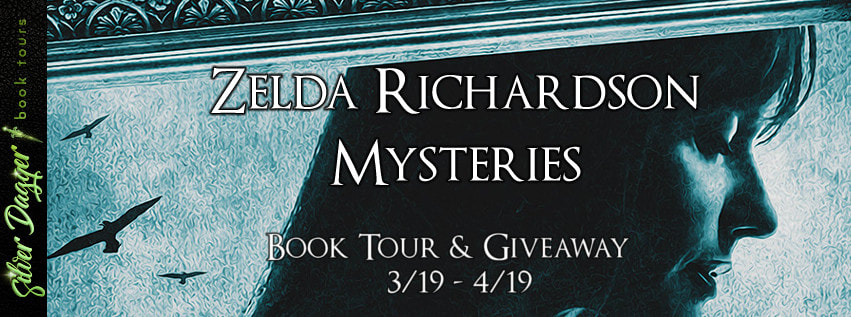
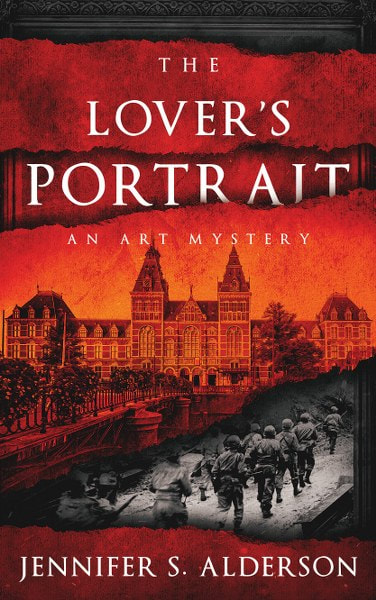


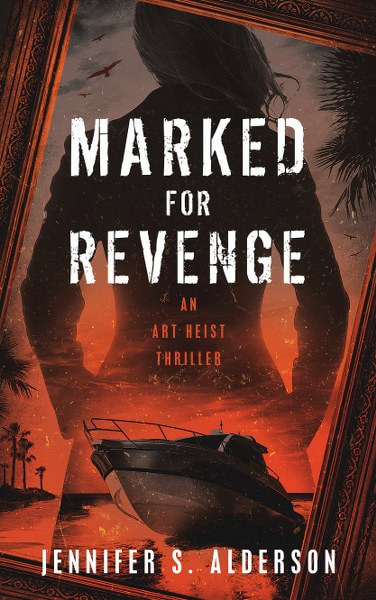
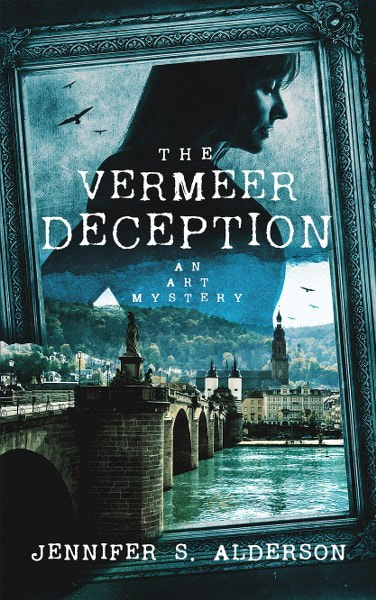



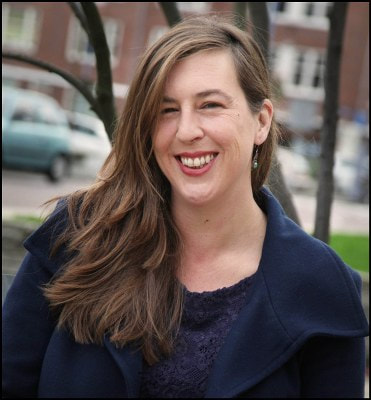

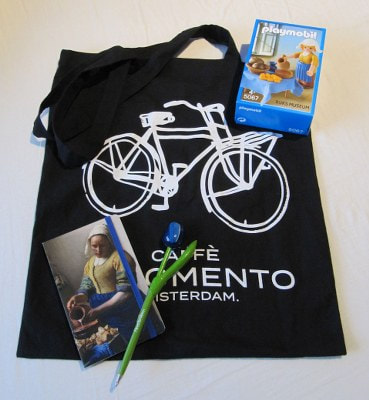

nice
ReplyDelete